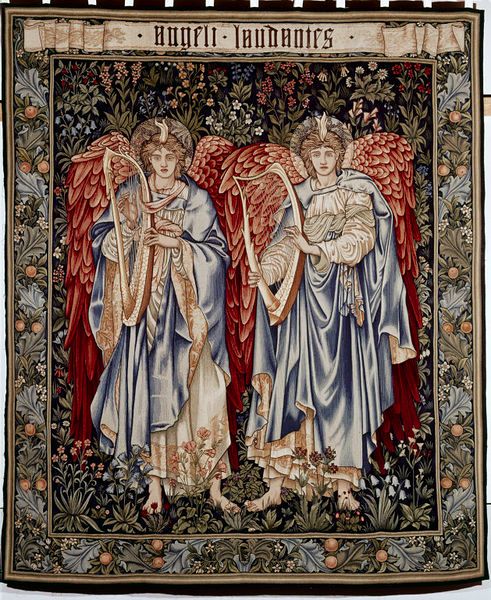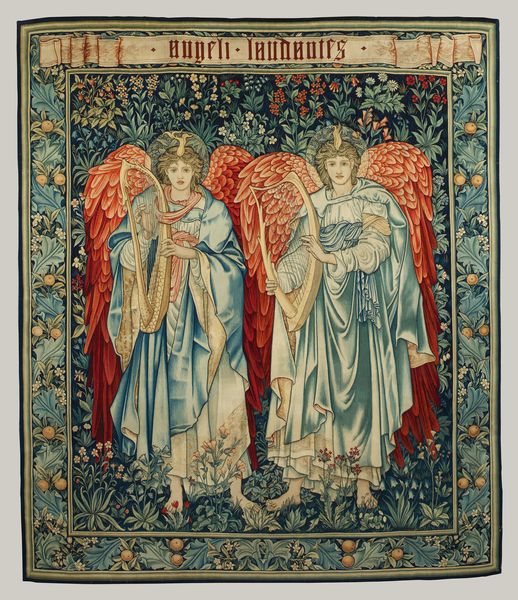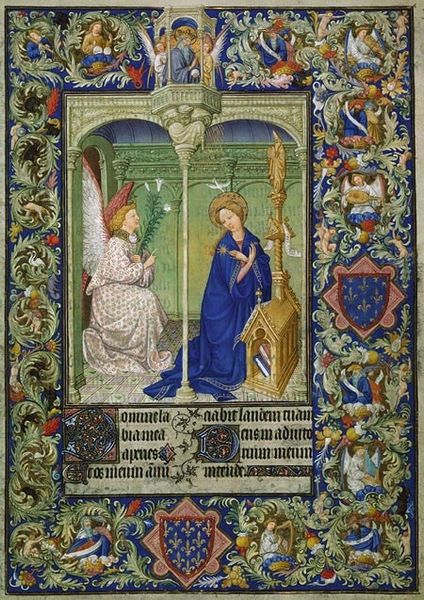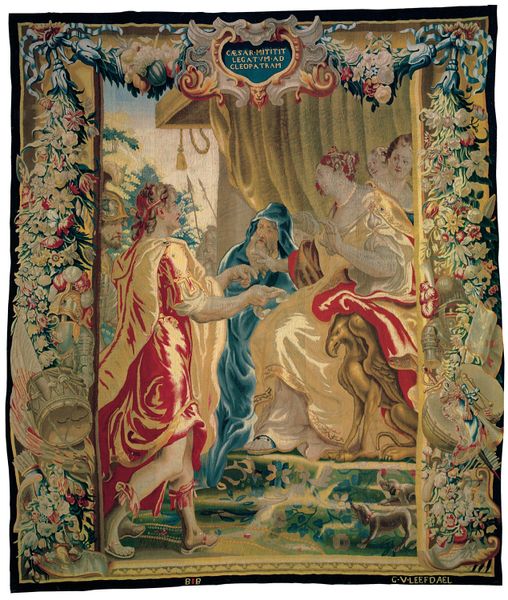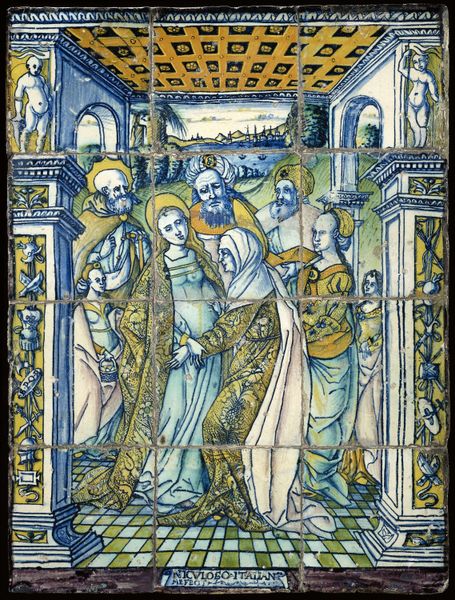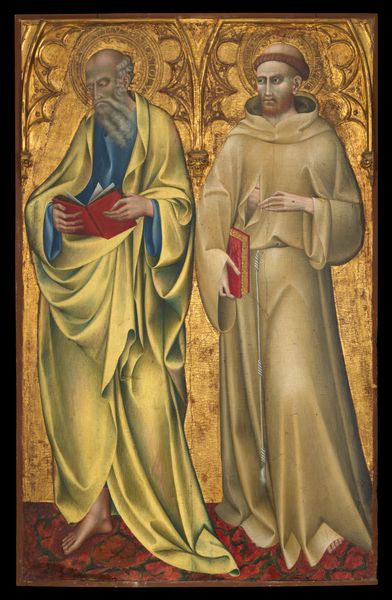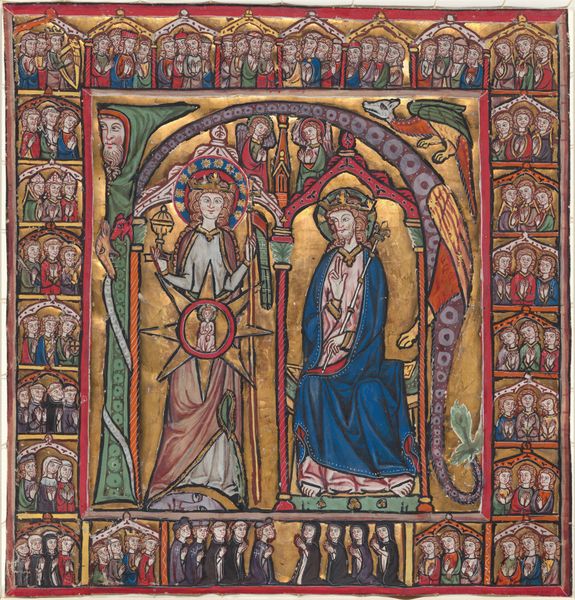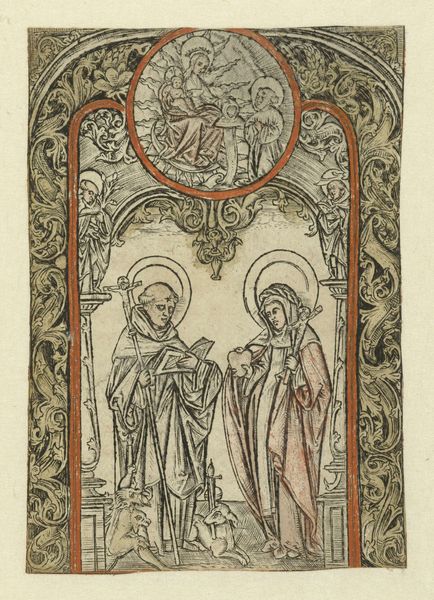
fibre-art, weaving, textile
#
portrait
#
fibre-art
#
medieval
#
narrative-art
#
sculpture
#
weaving
#
textile
#
figuration
#
christianity
#
symbolism
#
pre-raphaelites
#
angel
Copyright: Public domain
Edward Burne-Jones conceived “Angeli Ministrantes” as a tapestry, rich with symbols of divine service. Two angels, rendered with a delicate grace, stand amidst a field of flowers, each holding a staff. The angel, a motif stretching back to ancient Near Eastern art, serves as a messenger and intermediary. Here, Burne-Jones presents them in a Pre-Raphaelite style, emphasizing beauty and ethereal qualities. Consider, however, how different are these figures from, say, the winged deities of ancient Assyria, or even the more stern angels of early Christian art. The staff they carry is also symbolic, signifying authority and guidance. We see it echoed in classical depictions of Hermes or Mercury, gods who lead souls. Over time, this symbol has been passed down through various iterations, from the bishop's crosier to the scepter of monarchs, each reflecting a kind of leadership. In this tapestry, it evokes a longing for spiritual direction, tapping into a collective memory of divine guidance and protection. The serene beauty of the angels provides a powerful vision of hope, inviting viewers to engage with a deeply rooted sense of faith. This image demonstrates the cyclical nature of symbols, reflecting how the past resurfaces and evolves to meet the emotional needs of different eras.
Comments
No comments
Be the first to comment and join the conversation on the ultimate creative platform.
